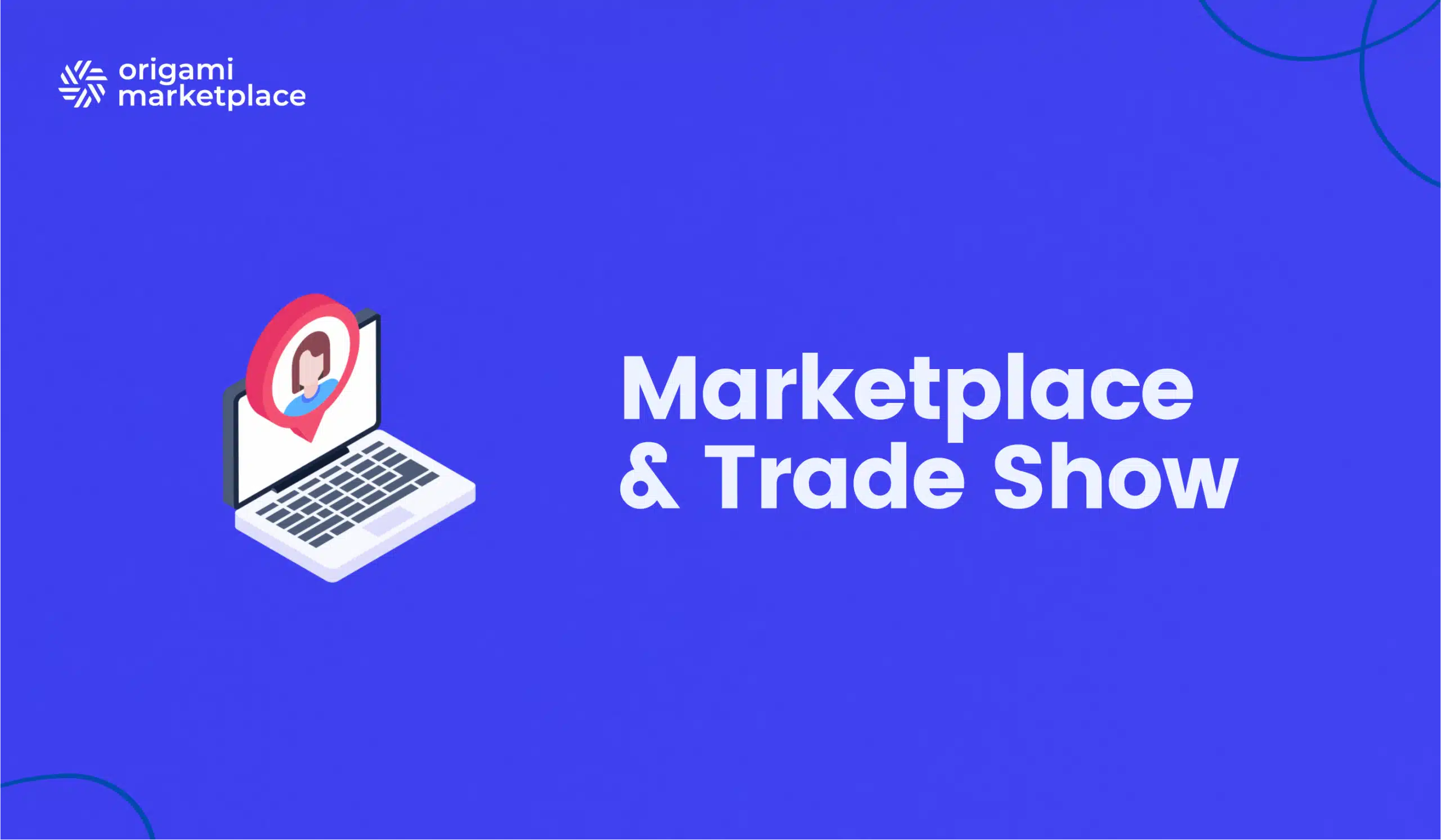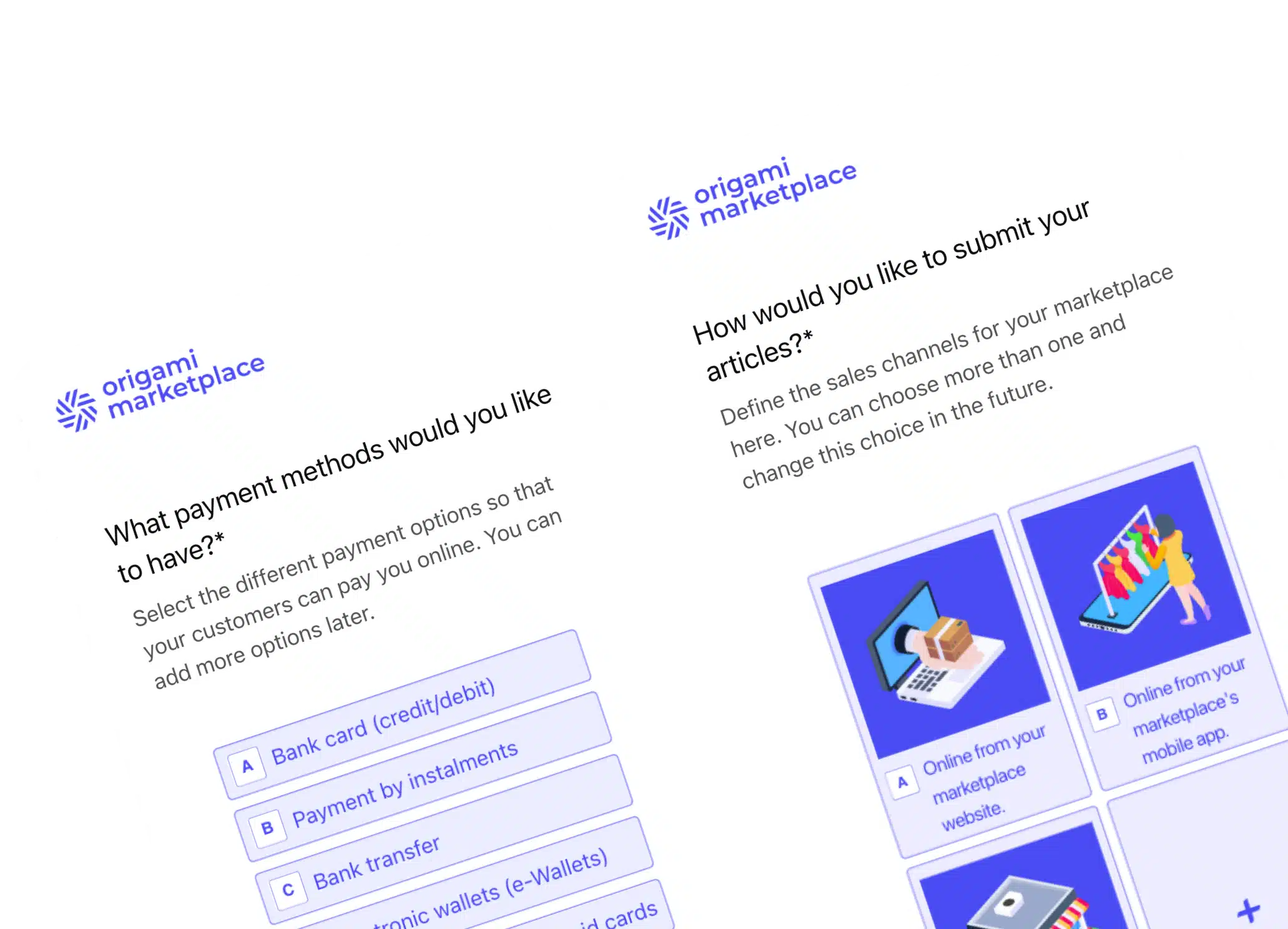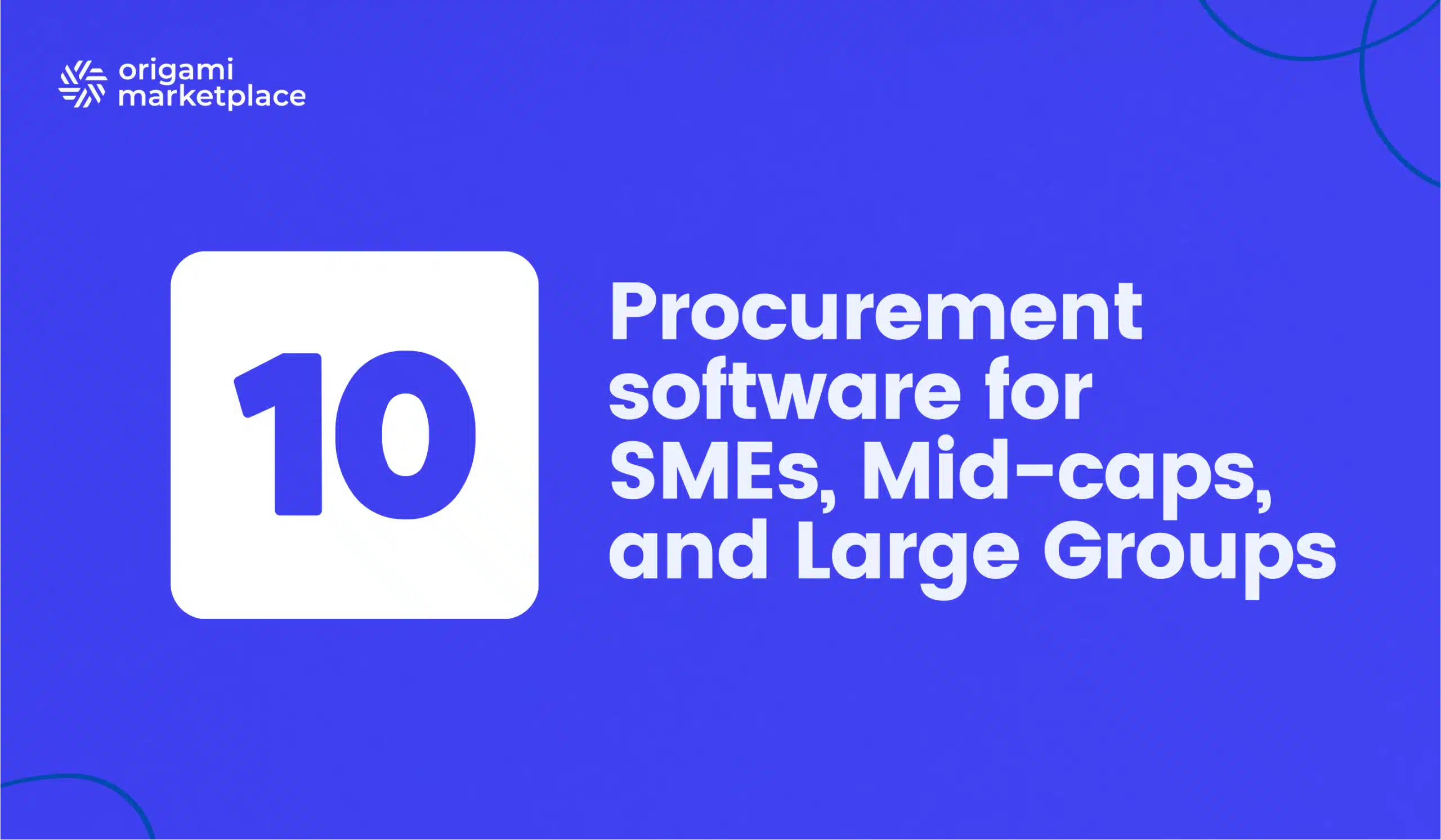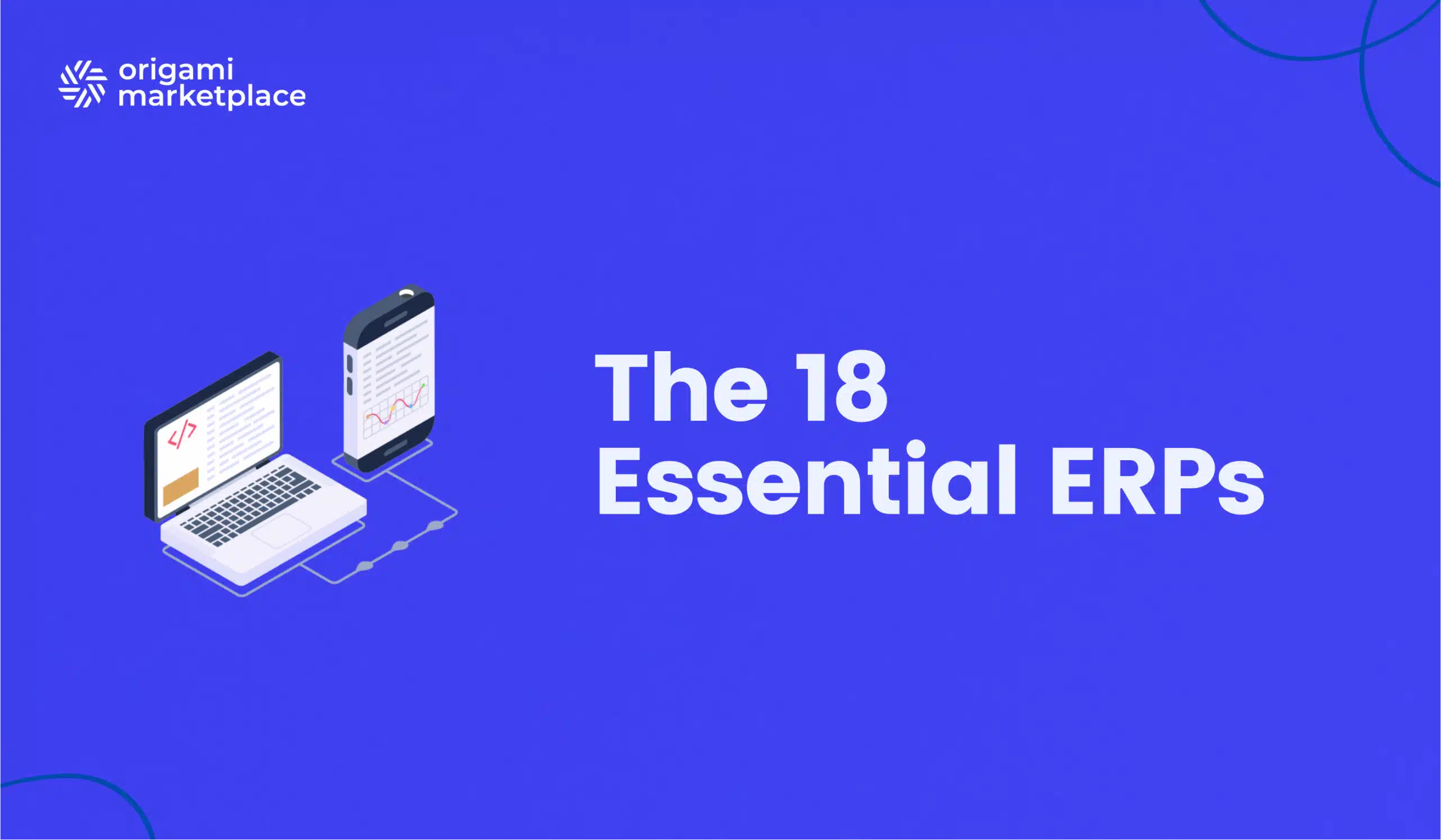Creating a B2B Marketplace for your Trade Show
- Arnaud
- 9 minute read

Transforming your trade show into a B2B marketplace is an essential step to stay competitive amidst the rise of digital technology in the events industry. Creating a marketplace for your professional event helps extend its impact, boost your revenue, and reach a national or international audience throughout the year. In this article, you’ll discover the challenges and benefits of this transformation, and why expert assistance is crucial for its success.
- Phygital in events: context and definition
- The rise of digital: how is it impacting trade shows?
- Why digitalize your trade show?
- Why marketplaces are the future of trade shows
- Challenges when transitioning from a physical trade show to a digital marketplace
- Creating an intuitive interface for your marketplace
- Preserving human interaction in your digital trade show
- Future vision: combining the best of physical and digital trade shows
- Why hire a marketplace expert?
- FAQ: Everything you need to know about digitalizing a trade show
👋 No time to read the entire article? Find the summary here.
1. Phygital in events: context and definition
The term “phygital” comes from the combination of the words “physical” and “digital“. It refers to the harmonious blending of in-person experiences and digital tools, enabling trade shows to offer a richer, more comprehensive experience to their participants. While the health crisis of 2020 acted as an accelerator, interest in hybrid events has continued to grow since then, now establishing itself as an essential standard within the B2B event industry.
Historical context: from traditional to phygital trade shows
Before 2020, trade shows primarily relied on face-to-face interactions. Businesses attended these events mainly to meet potential partners, acquire new customers, expand their professional networks, and increase market visibility. The global pandemic radically disrupted this model: travel restrictions, bans on large gatherings, and new health requirements forced event organizers to rapidly reinvent their approach. “Phygital” emerged as an obvious solution, combining:
- Physical events, with traditional trade shows still highly valued for the quality of human interactions they enable.
- Digital experiences, ensuring uninterrupted business continuity (live streaming, virtual booths, online networking platforms).
Why has phygital become essential?
Phygital’s popularity stems from its ability to simultaneously address several major challenges:
- Maintaining trade show appeal by offering a modern, flexible experience suited to new professional habits (remote work, video conferencing).
- Providing greater resilience against health or economic crises, reducing dependency on physical gathering conditions.
- Expanding audience and geographic reach by facilitating international participation from attendees who, for economic, logistical, or environmental reasons, might not be able to attend physically.
Thus, most trade shows have permanently incorporated a phygital dimension into their strategies, often developing dedicated B2B marketplaces to maximize their business opportunities throughout the year.
What exactly does a phygital experience involve?
A successful event experience in a phygital context is built around several key pillars:
- Live streaming to reach remote audiences.
- A digital interaction platform enabling easy communication (chat, online conferences, virtual spaces).
- Virtual and immersive booths, enhancing user experience through technologies such as augmented reality (AR) or virtual reality (VR).
- E-commerce, such as a marketplace, allowing direct online transactions to provide seamless commercial continuity and a smooth purchasing experience for attendees and exhibitors.
By adopting the phygital approach, trade show organizers are not giving up on human exchanges - quite the contrary. Rather, they are amplifying these exchanges by giving them an extra dimension that goes beyond the traditional confines of the physical show.

Alexandre Duquenoy
→ Talk to our expert
2. The rise of digital: how is it impacting trade shows?
Digitalization has profoundly reshaped the B2B events landscape, progressively transforming how professionals organize, attend, and perceive trade shows.
New event practices
Over the past few years, several digital innovations have transformed how trade shows are organized:
- Online registration and dedicated platforms: Significantly simplify administrative management, allow better anticipation of attendance, and improve post-event follow-up through data collection.
- Customized mobile applications: Offer attendees a tailored experience with interactive agendas, notifications, interactive maps, and easier networking through quick connections between participants and exhibitors.
- Immersive virtual booths: Allow exhibitors to extend their visibility beyond the physical limitations of traditional booths, providing attendees with an enriched experience accessible remotely.
Increasing competition from digital marketplaces
Physical trade shows no longer compete only with similar events but also with fully digital platforms that already list numerous products:
- Generalist B2B marketplaces such as Alibaba, Amazon Business, or ManoManoPro, offering quick, simple, and often cheaper transactions without heavy logistical constraints.
- Specialized sector-specific marketplaces, attracting targeted professional communities by providing personalized purchasing experiences tailored to their specific needs.
To remain competitive, trade shows must now deliver genuine added value: combining authentic human interactions, event reputation, and perfect mastery of digital tools.
Keeping human interaction central to digital transformation
Digitalization should not lead to dehumanized interactions. On the contrary, it should strengthen them by creating new opportunities for enriched exchanges:
- Interactive video conferences and webinars, promoting dynamic and engaging exchanges.
- Virtual spaces dedicated to networking, enabling facilitated meetings and targeted matchmaking.
- Integrated chat and instant messaging, offering direct, fast, and efficient communication between exhibitors and visitors.
- Direct online sales platforms, facilitating transactions between exhibitors and visitors, with a commission collected by the event organizers in exchange for the services provided.
Thus, when used appropriately, technology enhances the human experience rather than replacing it.
Ready to turn your B2B, B2C, or C2C marketplace vision into reality?
To help you develop the best platform possible, we’ve gathered all the must-have features, key technical considerations, and best practices in a comprehensive document:
Download the Specifications template 🗒
Perfect for smaller or medium-scale projects without a formal purchasing process. It will help you outline your requirements effectively and streamline your selection process.
Download the Request for Proposal template 📒
Ideal for larger, more complex marketplace projects with a formal purchasing department or advanced procurement policies.
3. Why digitalize your trade show?
Digitalizing your trade show is a strategic decision that benefits all stakeholders involved: organizers, exhibitors, and visitors.
Benefits for organizers
- Meeting professionals’ new expectations: With the rise of remote working and virtual meetings, participants now expect flexible experiences accessible remotely.
- Optimized and extended communication: Digitalization allows continuous communication before, during, and after the event, promoting better visitor retention.
- Diversified revenue streams: Adding a digital marketplace provides organizers with an additional revenue source throughout the year, thereby increasing the event’s profitability.
Benefits for exhibitors
- Extended commercial opportunities: Exhibitors’ visibility is no longer limited to the few days of the physical event. They can continue selling and promoting their products year-round through the marketplace.
- Increased cost-efficiency and profitability: Reduction in costs related to travel, logistics, and physical booth setup, while maximizing return on investment (ROI).
- Simplified international trade: Thanks to digitalization, exhibitors can easily access international markets even without being physically present.
Benefits for visitors
- Easy and convenient access: No longer mandatory to travel to attend a trade show. A simple internet connection now provides access to products, live conferences, and networking opportunities.
- Optimized purchasing experience: Visitors can directly purchase products via the trade show’s marketplace, with deliveries straight to their home or company premises.
- Extended and enriched experience: Visitors can review conference content, watch product demonstration videos, and continue discussions initiated during the event.
4. Why marketplaces are the future of trade shows
Continuous and extended commercial activity
Unlike physical trade shows, which concentrate activity over only a few days, a B2B marketplace allows:- Continuous presence of exhibitors, accessible at any time, regardless of geographic or time constraints.
- Generation of additional sales throughout the entire year, substantially enhancing overall revenues and return on investment (ROI) for exhibitors.
Expanded international reach
- Digitalization through a marketplace provides global visibility:
- Trade shows initially local or national can now easily reach an international audience, overcoming logistical, linguistic, or time-zone barriers.
- Participating companies can thus enter new markets, broaden their potential customer base, and strengthen international growth.
Hyper-personalized customer experience through data
The collection and analysis of user data enable:- A deeper understanding of visitors and exhibitors (preferences, purchasing behaviors, specific interests, etc.).
- Tailored experiences through personalized recommendations, significantly improving engagement, satisfaction, and conversion rates.
- Greater fluidity and efficiency in commercial interactions, strengthening business relationships before, during, and after the event.
Significant reduction in logistical and operational costs
Transitioning to a digital marketplace offers major financial advantages:- Reduction in travel and accommodation expenses, facilitating participation for both exhibitors and visitors.
- Significant decrease in physical logistics costs (transport, venue rentals, on-site staff, exhibition materials).
- Enhanced accessibility for SMEs and startups, enabling them to participate at a lower cost and increasing exhibitor diversity.

5. Challenges when transitioning from a physical trade show to a digital marketplace
Despite its significant benefits, transitioning to digital presents important challenges that must be anticipated to ensure the success of your marketplace:
Resistance to change among participants
- Initial negative reaction to digitalization: Some exhibitors or visitors may prefer traditional physical experiences, fearing that digital interactions might depersonalize or complicate their exchanges.
- Essential guidance and support: To overcome these concerns, it’s crucial to clearly communicate the tangible benefits of the marketplace, offer tailored training sessions, and provide ongoing support.
Risk of depersonalized interactions
- Potential loss of human connection: Without an appropriate approach, interactions risk becoming impersonal, reducing the attractiveness of the trade show.
- Interactive solutions to preserve human connections: Invest in digital tools that foster direct and spontaneous interactions such as video chats, live conferences, user-friendly virtual spaces, and interactive digital events.
Ensuring an impeccable user experience
- Critical importance of user-friendliness: A confusing or overly complicated interface quickly discourages users. The experience must therefore be smooth, intuitive, and accessible to everyone.
- Technical necessity of a robust platform: Fast loading times, optimal mobile accessibility, and flawless technical reliability to avoid user frustration.
Need for external expertise
- High-level technical expertise required: Implementing a high-performing digital marketplace demands specific skills in UX/UI, data management, cybersecurity, and digital marketing.
- Essential strategic support: Relying on a specialized service provider is crucial to anticipate and navigate technical or human challenges related to this digital transition, ensuring a smooth and successful implementation.
Ensure your success today. Take advantage of our free configurator to define the key outlines of your project and speak with one of our experts for a personalized study.

6. Creating an intuitive interface for your marketplace
Smooth and intuitive navigation
- Clear content hierarchy: Users must instantly understand how to access essential information: products, exhibitors, conferences, and services.
- Mandatory responsive design: The marketplace must adapt perfectly to all devices (computers, tablets, smartphones) to ensure a consistent experience for every user.
Clean and consistent design
- Unified visual identity: The interface should reflect your event’s visual identity to ensure consistency and strengthen brand image.
- Minimalism and efficiency: Users must easily find what they’re looking for, without unnecessary distractions or visual clutter.
Optimized technical performance
- Fast loading times: A marketplace that takes too long to load quickly loses users. Technical optimizations (efficient servers, image compression, optimized technical resource management) are essential.
- User data security, accessibility, and confidentiality: Strict compliance with GDPR, secure transaction handling, and transparency regarding data usage. Your marketplace must also be accessible to people with disabilities.
Integrated and proactive support
- Intuitive FAQ: Facilitate quick access to information through a clear, comprehensive FAQ section.
- Live assistance service: Offer a responsive chat or instant messaging service to immediately address user issues, thereby enhancing customer trust and satisfaction.
7. Preserving human interaction in your digital trade show
Despite the growing importance of digital, human interaction remains central to the success of a trade show. Here’s how to preserve and strengthen this crucial aspect within a digital environment:
Encourage direct and spontaneous interaction
- Integrated chat and video conferencing tools: Enable immediate, real-time exchanges that facilitate building strong professional relationships. Video, in particular, helps preserve the emotional and authentic dimension of human encounters.
- Interactive webinars and workshops: Actively engage visitors through interactive Q&A sessions, real-time polls, or participatory workshops led by industry experts.
Virtual spaces dedicated to networking
- Digital meeting spaces: Create specific virtual spaces where visitors and exhibitors can freely exchange ideas, similar to dedicated areas in a physical trade show.
- Private virtual meeting rooms: Offer participants the option to easily schedule individual or small-group meetings, encouraging deeper and more confidential interactions.
Gamification and engaging digital activities
- Interactive games and digital challenges: Boost visitor engagement by integrating digital games, contests, or interactive challenges linked to your event’s theme, enhancing community spirit and the playful aspect of the event.
- Relaxing and friendly virtual spaces: Provide informal digital spaces where participants can casually interact, creating a welcoming atmosphere akin to a physical event.
- Virtual reality (VR) and augmented reality (AR): These technologies deliver captivating immersive experiences, allowing visitors to interact with products, services, or technical demonstrations as if physically present, while maintaining strong human connections.
8. Future vision: combining the best of physical and digital trade shows
The future of trade shows clearly revolves around a harmonious blend of physical and digital experiences, opening exciting new possibilities for B2B events:
- Total fusion of physical and digital: Future trade shows will be fully hybrid, simultaneously offering high-quality physical experiences and comprehensive digital extensions that enhance overall accessibility and engagement. Each participant will freely choose their interaction mode (in-person, remote, or mixed), creating a tailored experience perfectly adapted to their preferences and constraints.
- Immersive experiences enhanced by technology: Widespread immersive technologies (VR, AR) will become accessible to everyone, transforming user experiences by enabling total immersion in interactive, realistic, and personalized virtual spaces while preserving genuine human interaction. These technologies will notably allow exhibitors to provide spectacular and captivating product demonstrations, significantly increasing their appeal to visitors.
- Real-time personalization through AI: Artificial intelligence (AI) will play a central role in adapting the user experience in real time, offering personalized content recommendations, targeted networking opportunities, custom agendas, and navigation constantly adjusted to individual preferences. This hyper-personalization will increase visitor engagement, enhancing satisfaction and the overall ROI of trade shows.
- Preserving authentic human interaction at the heart of digital experiences: Despite technological advancements, human interaction will remain central. The hybrid trade show of the future will prioritize maintaining the quality of human exchanges, continually reinforcing the authenticity of meetings and relationships created.
9. Why hire a marketplace expert?
The successful transition to a B2B event marketplace depends on dedicated professional support, such as that offered by Origami Marketplace, ensuring comprehensive management of the numerous challenges associated with digital transformation.
Essential technical expertise
- In-depth mastery of marketplace technologies: A team of experts provides you with precise technical skills, particularly in data management, cybersecurity, complex technical integrations, and custom development.
- Optimized user experience (UX/UI): Experts design an intuitive, user-friendly platform specifically tailored to the unique requirements of B2B professionals.
Strategic advice and change management
- Managing internal resistance: An expert team helps effectively navigate the transition, reassures your teams and exhibitors, and ensures the rapid adoption of new digital tools.
- Personalized strategy aligned with business goals: Specialists create a coherent digital strategy aligned with your commercial objectives to quickly maximize your return on investment.
Time savings and risk reduction
- Avoid costly errors: By working with experts, you significantly reduce the risk of potentially expensive strategic or technical errors that could damage your event’s reputation.
- Rapid and efficient implementation: Benefit from the smooth and rapid launch of your marketplace, thanks to proven methodologies and specialized expertise.
Continuous access to innovation
- Ongoing technological monitoring: An expert team provides continuous technological surveillance, ensuring your marketplace remains innovative, competitive, and effective as market conditions evolve.
- Regular updates to digital tools: Quickly integrates relevant new technologies into your marketplace, ensuring an always cutting-edge user experience.
Thus, choosing the right partner represents a strategic investment guaranteeing the long-term success and sustainability of your event marketplace. Would you like to discuss your project with one of our experts? Our team is available to support you.
FAQ: Everything you need to know about digitalizing a trade show
- Why create a B2B marketplace for your trade show? To extend your event’s impact, generate sales year-round, and reach an international market.
- What are the benefits of a phygital trade show? It combines the advantages of physical (authenticity, human interactions) and digital (accessibility, reduced costs, personalization) experiences.
- How can you successfully transition from a physical trade show to a digital marketplace? Clearly define your goals, select appropriate digital tools, design an intuitive interface, and seek assistance from specialized experts.
- How much does it cost to create a B2B marketplace for a trade show? Costs vary according to features and the project specifications.
- How to maintain human interaction within a digital trade show? Use interactive tools such as chat, video conferencing, webinars, virtual networking spaces, and immersive technologies.
📌 No time to read it all? Here are the essentials:
- Digitalizing your trade show by creating a B2B marketplace allows you to generate sales throughout the year, expand your market internationally, and extend the event’s overall impact.
- Phygital combines human interaction (physical events) with digital solutions (virtual marketplaces), offering the best of both worlds.
- This transition reduces logistical costs, enhances user experience, and optimizes commercial interactions through innovative digital tools.
- To achieve this transformation without sacrificing authenticity, it’s crucial to preserve human interaction (chat, video, interactive webinars) and ensure an intuitive user experience.
- Hiring specialized experts is essential to overcome technical and organizational challenges, ensuring the rapid success of your event marketplace.
👉 Ready to take action? Contact our team of experts today to get started on your event marketplace project.


